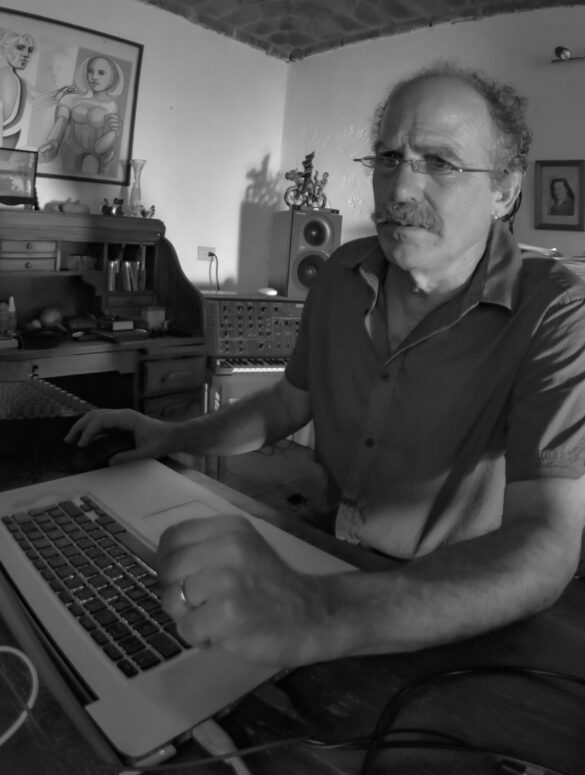Publicación bilingüe del Centro Mexicano para la Música y las Artes Sonoras
Año XII | Nº 23 | Julio – diciembre 2020
Director: Rodrigo Sigal
Summaries and other creative mysteries in art, ideas and computer music science
Approaching technology applied to music and art in general, leads to the birth and development of new areas of knowledge that must necessarily permeate educational courses from basic level to specialization programs.
As inventors, composers, researchers and musicians, we have built a significant number of systems and products that resonate today in the life of each person. These range from the most advanced forms of contemporary music composition, sound synthesis, performance, real-time composition and sound processing; to everyday consumer-oriented activities such as mass market music production and playback systems.
Many of the early developments in computer music (as you will read in some of the articles), are still expressed today in one form or another within more evolved computer systems and environments.
Computer science today, offers us much more accessible artificial intelligence algorithms with a great diversity of applications never imagined. Opening amazing opportunities to develop (among others), new algorithmic composition techniques, thus expanding the work that Hiller, Koenig and Xenakis did at the beginning.
The use of computers in music and art is possibly the most exciting and liberating thing in the history of mu-sic. It is certainly an appeal to those creative people who wish to explore the possibilities (and limits) of music and be as musically creative as possible.
For me, it is an immense pleasure to share with you this selection of contributing authors. A compilation that reflects in a surgical way our avatar as creators, users and inventors of technology applied to music ranging from the 80s up to present date and how new paradigms appear and manifest themselves in the creation and interpretation of music with technology.
In Summaries and Other Creative Mysteries in Art, Ideas and Computer Music Science, we find topics that include: the design of digital instruments, new interfaces for capturing gestures, artificial Intelligence, algorithmic composition, generative processes, collaborative relations with other disciplines, the human voice as an object that generates ideas and digital instruments and reflections on creation using advance computer environments.
I therefore divide the journal into four themes that converge with the articles proposed for this issue of Ideas Sónicas, and these are:
- IMAGINARY, IDEAS AND CREATION I
Lippe, Rai, Simoni. - ARTIFICIAL INTELLIGENCE, SYNTHETIC ABSTRACTIONS, GESTURE CAPTURING
Rowe, Collins, Olofsson, Tanaka. - IMAGINARY, IDEAS AND CREATION II
Puckette, Manoury, Lewis. - THE VOICE AS A CENTRE OF CREATION AND GENERATION OF NEW INSTRUMENTS
Formant Brothers, Wishart.
My purpose for this edition is to spread enthusiasm for «the science of computer music» and the cybernetic imagination that we all carry within us more efficiently than COVID-19.
Finally, I would like to thank Rodrigo Sigal for his generous invitation to curate this issue of Ideas Sónicas.
Dr. Roberto Morales Manzanares
Índice
Computational media: New sounds, algorithms, processes, and interaction
Cort Lippe
6
A memoir of a composer
Takayuki Rai
11
A Once.then–Once.more: the composition, performance, and recording of my Piano Trio with Electronics
Mary Simoni
18
Machine Learning and Composition
Robert Rowe
22
Composition in the Age of AI
Nick Collins
28
Cybernetic music in practice
Fredrik Olofsson
37
The Phenomeology of Musical Gesture
Atau Tanaka
41
Five Incitements for Electronic Music Makers
Miller Puckette
48
An approach to a Theory of Musical Attractions
Philippe Manoury
53
Remains of The Sky: Weather-driven interactive intermedia
George Lewis
57
Activities and thoughts of the Formant Brothers
Miwa & Sakonda
61
“Sounding Off : Making music from Speech”
Trevor Wishart
67
Biography
78




